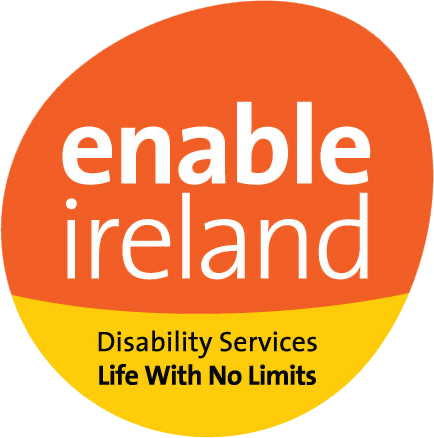What is Emotional Regulation?
Click here to see the Video presentation shared further down this page
Emotional regulation is a term used to explain how someone manages or controls their emotional responses to situations in a positive way.
For children, it’s about how they learn to deal with difficult emotions, control their impulses and calm themselves down. It’s also about how they learn socially acceptable ways to respond to emotions and prevent them from becoming dysregulated (unable to regulate their emotions).
Children learn how to regulate themselves from their parents and caregivers through a process called co-regulation. This is when a person feeds off the regulation state of those around them (like sponges). Children with sensory differences may often rely on those around them to help them to regulate or to maintain a state of regulation.
We are not born with the ability to self-regulate. This skill is learned over many years, and it changes as we get older into adulthood. As parents, you can demonstrate and model your own self-regulation through this process of co-regulation.
What can I do as a parent if my child has difficulty regulating emotions?
Accept
Accept your child’s emotions and emotional responses: Emotional outbursts are a normal part of development and are not intentional attempts to make parenting difficult. By having patience and ‘tuning in’ to your child’s emotional states, you can help them tolerate emotional tension.
Appropriate expression of negative feelings: All feelings are okay and normal. Negative feelings can be put into words and children can be praised when they do this in appropriate ways.
Encourage children to talk about feelings and avoid directives about feelings: Avoid statements such as ‘Don’t be sad’. Instead label the child’s feelings accurately and encourage the child to talk about the emotion, such as ‘I see you are sad about that, tell me about it’.
Model
Model emotional regulation: Children are likely to imitate your example. Be aware of how you handle your own emotions and model the behaviour you would like your child to exhibit. It is also important to stay calm yourself when your child’s emotional responses are escalating.
Talk about your own feelings: Parents who frequently use the language of emotions to talk about their own emotional states are providing a powerful mechanism for emotional regulation.
Teach
Teach children positive self-talk about the event: Teach children to tell themselves thoughts which calm them down such as ‘everyone makes mistakes’, ‘I can handle this’ and ‘It was an accident’.
Teach problem solving: Teach children to generate several solutions to a problem and then select one based on their pros and cons.
Help children recognise ‘early warning signs’: Teach the child to recognise the warning signs of an emotional outburst such as grumbling or feeling irritated etc. If your child can talk about their feelings at this stage, it can help avoid escalation.
Help children with transitions: Plan ahead for the daily schedule and give verbal warnings five to ten minutes before transitions. A visual schedule may help to show the order of different activities.
Practice
Practice calming relaxation techniques: Practice strategies that can help your child to calm such as the ‘Turtle Technique’ which involves imagining that he or she is retreating into his shell, taking three deep breaths and saying ‘calm down, take deep breaths’. The child can imagine they are ‘pushing’ the air into their arms and legs to relax their muscles.
Be Consistent
Provide a stable and consistent environment: Consistent limit setting, clear household rules and predictable routines help children know what to expect.
Remember the basics: Don’t forget to ensure sufficient sleep, appropriate die, exercise and engaging activities.
Create a Calm Zone
Find a quiet zone in the house
Mark out the zone and make it cosy. For example, use a tent or curtain to define the space, and put in a bean bag, pillows and stuffed animals.
Add some calming tools. For example, music, fidget toys, lava lamp, or therapy ball, and include visual cue cards to give visual reminders of calming activities.
Explain how to use the calm zone and practice and practice calming techniques.
Use the zone throughout the day. Don’t just wait for your child to be distressed.
Attune to Emotions
Aware – vecome aware of emotion, especially if it is low intensity, such as disappointment or frustration.
Connect – view their emotions as opportunities for connection and teaching.
Accept – listen and accept their emotions, and avoid judgement. Be with the child’s emotions. What helps children the most is having us with them in their emotions rather than us trying to stop them from feeling how they feel. Knowing that we do not have to be alone when we are upset is at the heart of feeling emotionally secure.
Reflect – help them use words to describe what they feel.
Problem solve – if appropriate, help them to problem solve. But remember the importance of being with the feelings and not doing something about the feelings.
Teach how to ‘think like a turtle’

Recognize your feelings.
Stop your body.
Tuck inside your “shell” and take 3 deep breaths.
Come out when you are calm and think of a solution.
Be With Your Child
One of the most important things we can do for a child who is upset or distressed is to just be with them. By showing our child that we can be with them when they are feeling dysregulated, we are showing them that all feelings, even big uncomfortable ones, are ok. We can be with our child by:
Pausing our own agenda or plan for that moment when a child becomes upset.
Showing them with our body language that we are in the moment with them, for example, by getting down to their level.
Mirroring what they are feeling with our facial expressions and gestures, such as nodding.
Using minimal words or vocalizations to let them know they are safe with us because we understand.
These soothing, respectful, and nurturing interactions are commonly referred to as ‘co-regulation’. Co-regulation is a pre-cursor to the child learning to self-regulate.
Have a Routine
 The use of daily routines can provide structure and predictability. Routines help everyone know what to expect, what is coming next and what there is to look forward to. Creating a visual schedule together is a nice way to ensure everyone is aware of the plan for the day. You can use pictures, drawings, write the words or all the above. The schedule can include times for school, free play, mealtimes, outdoor play, screen time and chores. By increasing predictability, routines can help increase regulation across the day.
The use of daily routines can provide structure and predictability. Routines help everyone know what to expect, what is coming next and what there is to look forward to. Creating a visual schedule together is a nice way to ensure everyone is aware of the plan for the day. You can use pictures, drawings, write the words or all the above. The schedule can include times for school, free play, mealtimes, outdoor play, screen time and chores. By increasing predictability, routines can help increase regulation across the day.
Introduce Visual Scales
 Using a visual scale such as an emotional thermometer, or a 5-point scale may be useful. This is a visual system that can help organise your child’s thinking when they are working through difficult moments. When you first introduce this system, work together to create their own labels for each level – these could be words, colours or numbers.
Using a visual scale such as an emotional thermometer, or a 5-point scale may be useful. This is a visual system that can help organise your child’s thinking when they are working through difficult moments. When you first introduce this system, work together to create their own labels for each level – these could be words, colours or numbers.
For a child who is a visual learner you might start to associate different colours with different states, for example, green with happy and red with frustrated. Next, add pictures to teach what different levels might look or feel like and identify coping strategies that might be useful at the different levels, for example, taking a break, or showing a ‘help’ card’ (see under ‘Coping Strategies’ below for more on this).
First, practice using the scale when your child is regulated. Later, you can show the scale when you sense your child is becoming dysregulated and use it to help them identify that feeling and remember some of their coping strategies.
Introduce Social Stories
 When appropriate, using a social story that incorporates how your child feels and more appropriate ways to react to a situation may be useful. Social stories can be helpful if there is a particular situation that brings up feelings for your child that they find difficult to manage, such as losing a game, or waiting for their turn. In the social story, explain the feeling, but give some solutions about better ways they could respond to the feeling.
When appropriate, using a social story that incorporates how your child feels and more appropriate ways to react to a situation may be useful. Social stories can be helpful if there is a particular situation that brings up feelings for your child that they find difficult to manage, such as losing a game, or waiting for their turn. In the social story, explain the feeling, but give some solutions about better ways they could respond to the feeling.
Teaching Coping Strategies
Coping strategies are likely to be taught slowly, with lots of practice. These might include taking 5 deep breaths, asking for help, or walking away and spending time alone. Coping strategies are best practised when a child is calm and alert for learning. When they become very familiar they can be used when the child is dysregulated. Again, pictures, signs and actions will be helpful. When teaching deep breathing you could use the actions ‘Smell the Flowers’ for the inhale and ‘Blow out the Candles’ for the exhale. A ‘help card’ that a child can show is a good way of asking for help or teaching a sign. For example, ‘showing 5 fingers’ could symbolise ‘I need 5 minutes' or 'I need a break’.

Calm Kit /Stress Kit
 A calm kit is a practical strategy to help a child self-manage big emotions. The goal is that the child will feel more relaxed and regulated after engaging with items in the kit. Consider options for making the child's stress kit portable. For example, they can have a mini box in the car or smaller items in their pockets. A calm kit or calm box is used to help a child calm and increase self-management skills, it should be always easily accessible. Items to include might be: fidget toys, music, calming items such as stress balls or bubble wrap, pictures or items related to a special interest.
A calm kit is a practical strategy to help a child self-manage big emotions. The goal is that the child will feel more relaxed and regulated after engaging with items in the kit. Consider options for making the child's stress kit portable. For example, they can have a mini box in the car or smaller items in their pockets. A calm kit or calm box is used to help a child calm and increase self-management skills, it should be always easily accessible. Items to include might be: fidget toys, music, calming items such as stress balls or bubble wrap, pictures or items related to a special interest.
Here are some things to keep in mind that may escalate emotions
Don’t raise your voice
Don’t focus on who is right
Don’t focus on having the last word
Don’t preach
Don’t plead or bribe
Don’t hold a grudge
Don’t over-generalise your child’s behaviours
Don’t dismiss their emotions
Videos
This four-part series on Emotional Regulation was delivered by the psychology team in the North Wicklow CDNT as part of a webinar workshop series for parents of children with disabilities and specifically children with regulation challenges.
Further Reading and References
Books
The Incredible 5-point Scale: Assisting Students in Understanding Social Interactions and Controlling Their Emotional Responses (2nd Edition, 2012)
The Explosive Child: A new approach for Understanding and Parenting Easily Frustrated, Chronically Inflexible Children 6th ed, Ross W Greene, Ph.D., Harper, 2021
The Incredible Years (R): Trouble-Shooting Guide for Parents of Children Aged 3-8 years, Carolyn Webster-Stratton, The Incredible Years, 2019
The Explosive Child: A new approach for Understanding and Parenting Easily Frustrated, Chronically Inflexible Children 6th ed, Ross W Greene, Ph.D., Harper, 2021
Websites
‘Let’s Get Regulated’ NCSE Booklet - https://ncse.ie/wp-content/uploads/2020/03/Lets-Get-Regulated-Information-for-Parents.pdf
Creating a Calm Zone at home. Middletown Centre for Autism. https://severe-learning-disability.middletownautism.com/wp-content/uploads/2021/08/Calm-Zone-Recommendations.pdf
Websites: Helping Children Learn to Regulate Their Emotions https://stoswaldsschool.com/wp-content/uploads/2020/04/helping-children-regulate-emotions.pdf



